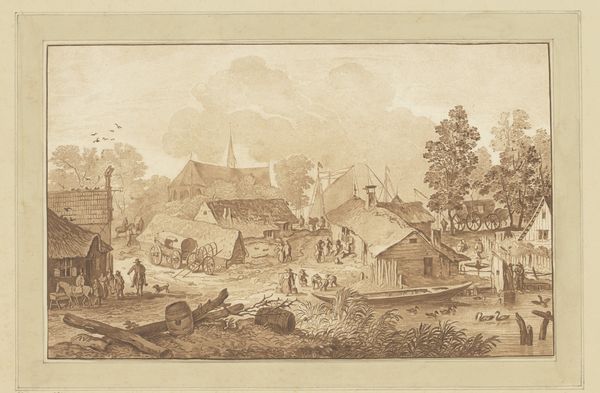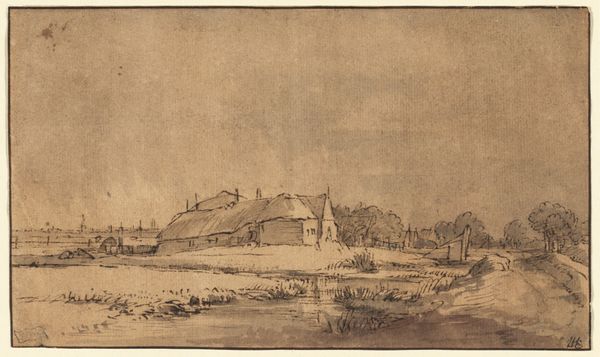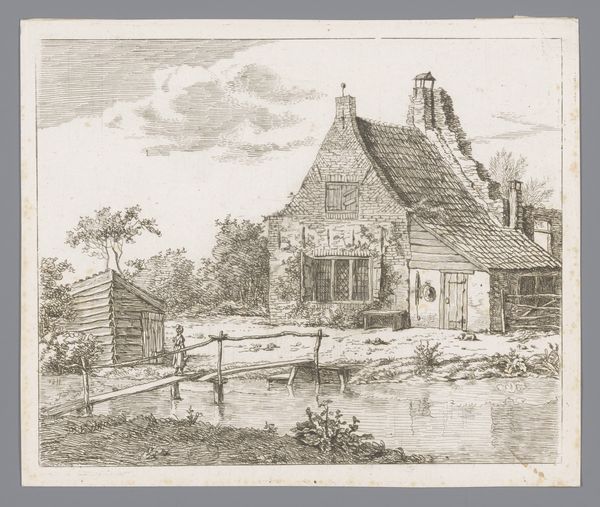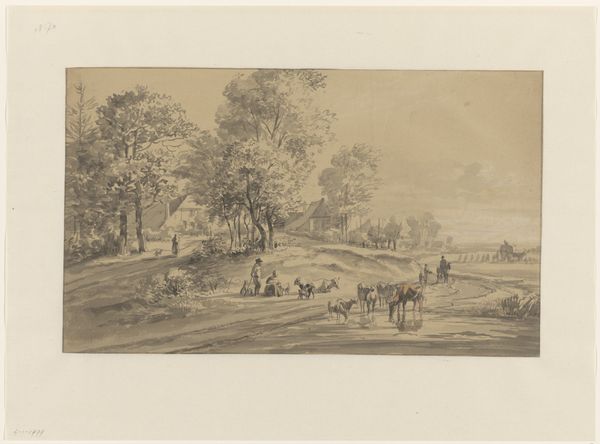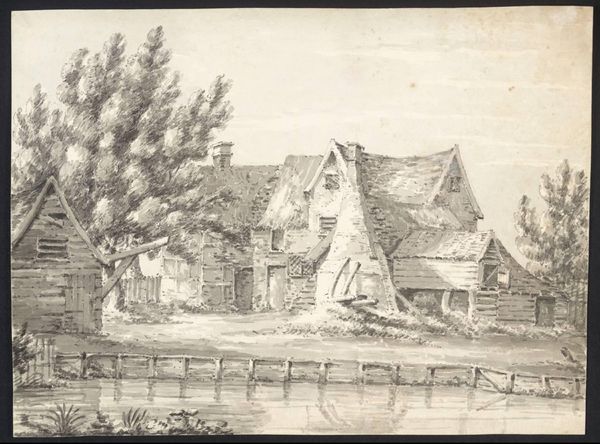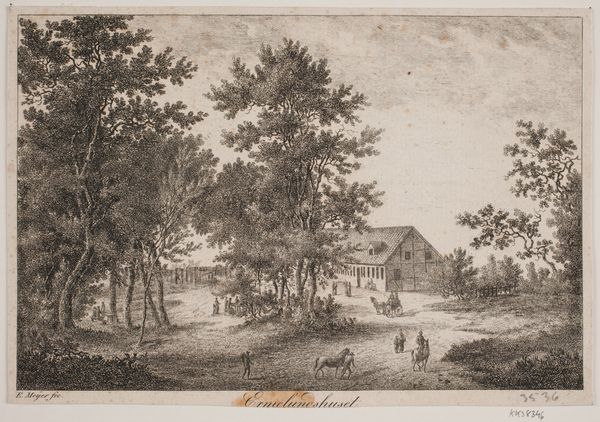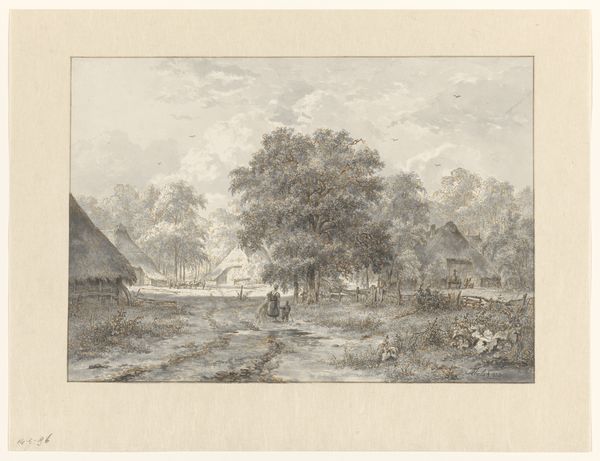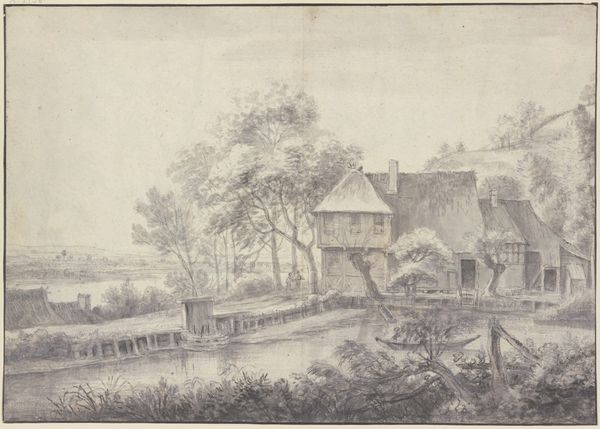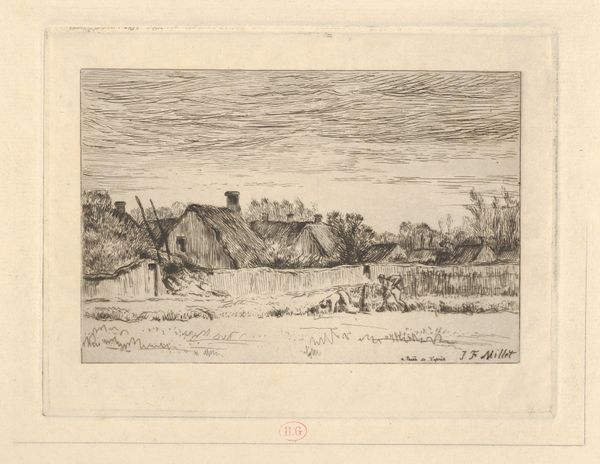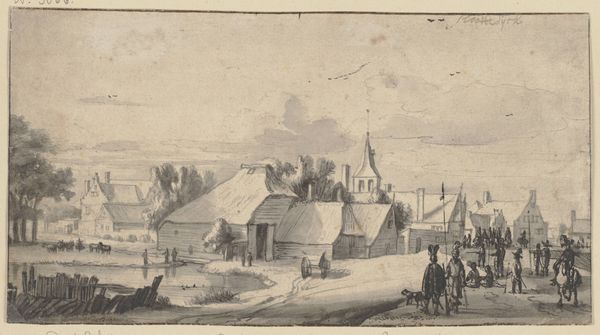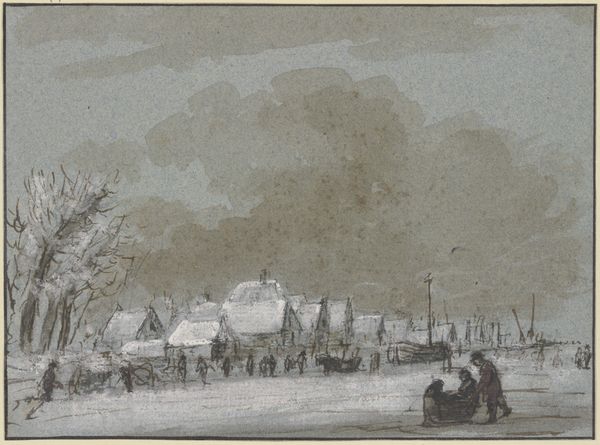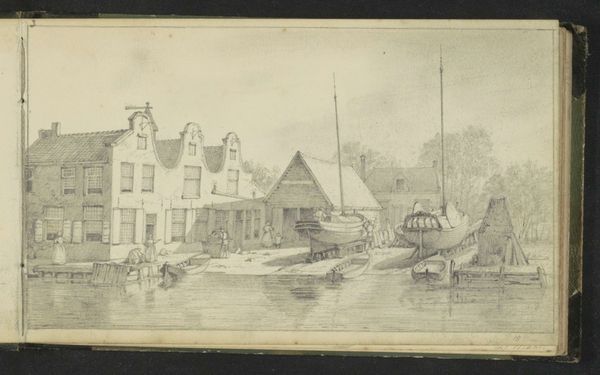
drawing, etching, paper, ink, pen
#
drawing
#
dutch-golden-age
#
etching
#
landscape
#
paper
#
ink
#
pen
#
genre-painting
Dimensions: height 175 mm, width 258 mm
Copyright: Rijks Museum: Open Domain
Editor: This is "Te Schellingwou," a pen and ink drawing by Simon Fokke, dating sometime between 1722 and 1784. I’m immediately drawn to how much activity is captured in such a small space, giving a slice-of-life feeling. What visual cues jump out to you in this piece? Curator: Indeed, it’s a deceptively simple image brimming with symbolic weight. Notice how the architecture, the thatched roofs and the flag, root us firmly in place – yet the presence of water, the boat and the birds in flight, introduce an element of transition and journey. Does this juxtaposition strike you as deliberate? Editor: Absolutely, it's a snapshot, but it’s not static. It's also got this quaint, almost nostalgic atmosphere. Is that something you see reflected in other works of the time? Curator: The domestic scene is meticulously rendered. These elements act almost as cultural anchors. The figures on the bridge are engaging in commerce or daily errands; they speak to continuity and collective identity. Do you get a sense of this collective spirit or shared cultural identity as you look at the drawing? Editor: I see people going about their daily lives, but I didn't initially read it as symbolic of something larger. The image now has layers that I didn’t appreciate at first glance. Curator: Think about the use of light and shadow too – the contrast between them brings definition. The image quietly asks: what pieces of our lives carry this symbolic weight, this emotional resonance, as time moves on? Editor: So it’s less about this specific village and more about the idea of "home" and daily life across time. That makes it so much more profound. Thanks!
Comments
No comments
Be the first to comment and join the conversation on the ultimate creative platform.

